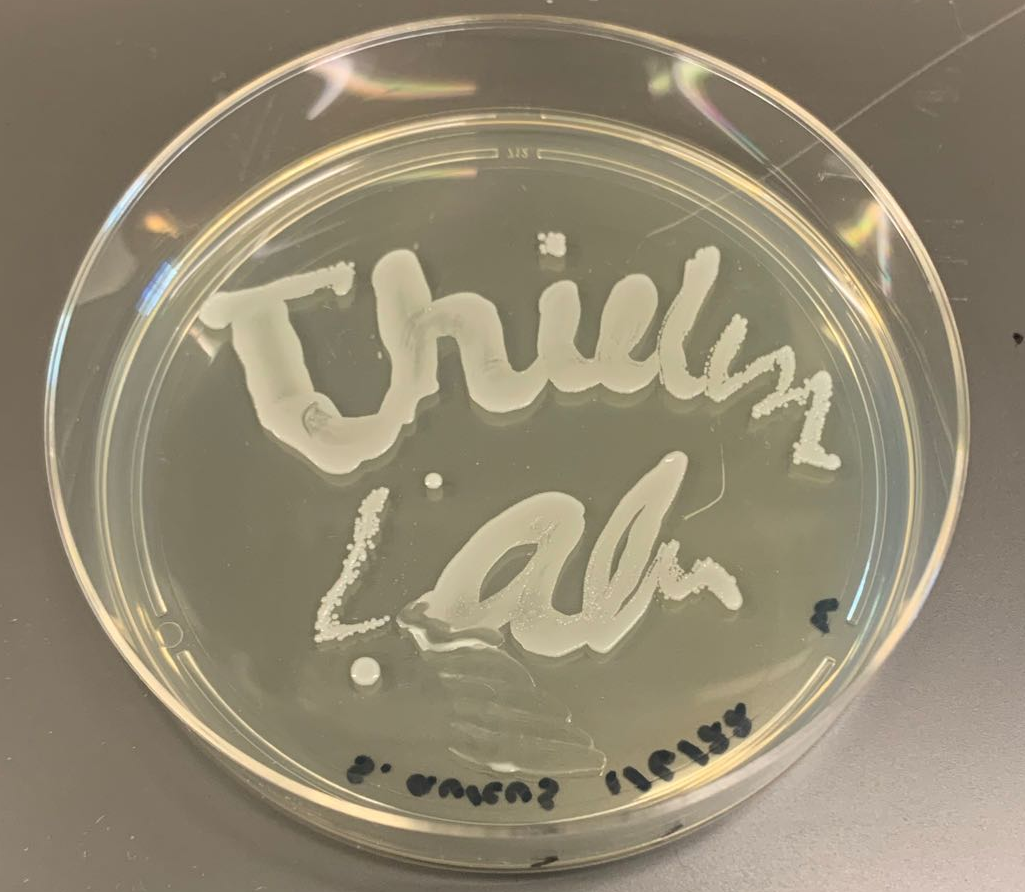Although the primary focus of our lab may be respiratory viruses, some of our work involves the use of different bacteria.
Bacteria are microscopic single celled organisms that live all around and even inside of us! To learn more about the bacteria that exist on and inside our body check out the Respiratory Microbiome page.
These small organisms can be useful for a lot of different experiments in the laboratory. We use them in order to model the bacterial communities from our bodies in a lab environment. This is accomplished through something called a coculture, where bacteria are grown alongside human cells and/or viruses so that we can see how they interact and model some of the mechanisms that occur within our body that may cause us to resist or become susceptible to different kinds of viral infections.
Bacteria are also useful in a laboratory setting because they can be grown relatively easily and in large quantities, this makes them perfect for generating large amounts of DNA, specifically genes, which we can use in our work with respiratory viruses.
To learn more about some of the bacteria we use in the lab, check out the Learn More section!
